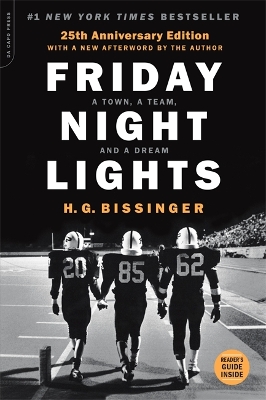
gmcgregor
Written on May 12, 2017
That enormity of public emotional investment into the team has real ramifications for the people who make it up: the coach and his family, of course, but also the players. The coach (only very vaguely reminiscent of the beloved Coach Taylor) is at least a well-compensated professional, but the players are just teenagers. You can see the loose outlines of some of the characters who would make up the core of the show: the hot-shot, big-talking running back, the reserved, wary quarterback, the trouble-making, fast-living halfback. But the players themselves are kind of inconsequential: they are merely the bodies inside the uniforms that have such symbolic meaning. It's Permian that the crowd roots for year after year, even as the names on the jerseys come and go.
Reading this after seeing the show is the opposite of the usual reaction: the screen adaptation is so rich and beautifully realized that the book has a hard time living up to the comparison. Part of that is because they're telling similar stories in two very different ways. The book is more interested in looking at the broader social picture and the way that team fits into that picture as a whole, and only then in its component parts, while the show takes the opposite storytelling tack and focuses on the people and their relationships making up the team, filling in the charged atmosphere around them but leaving it as mostly background. So by nature the book is more impersonal, more clinical and removed. The show, on the other hand, focused on realistic character development in a way that even many authors I've read could benefit from learning from. Of the two versions, I'd recommend that literally everyone watch the show, but the book is good-not-great. If you like stories about football and/or small town life, you'll likely enjoy it. If not, it's skippable.
